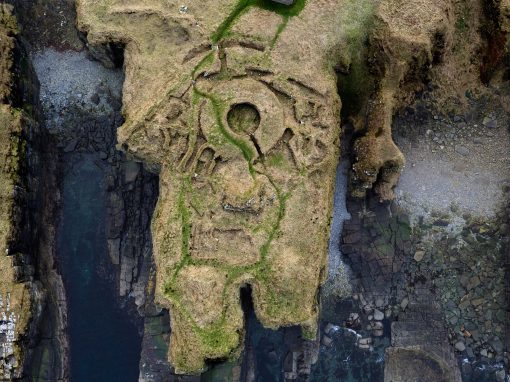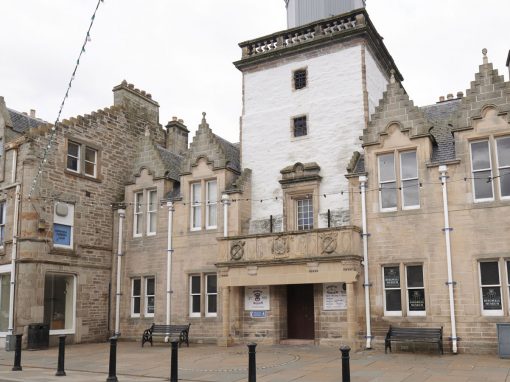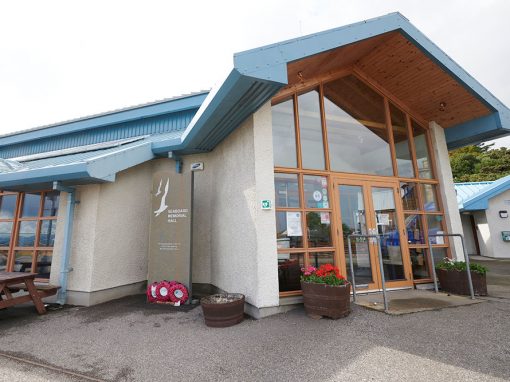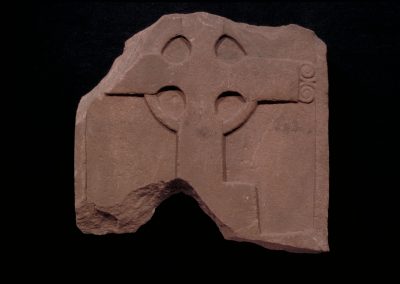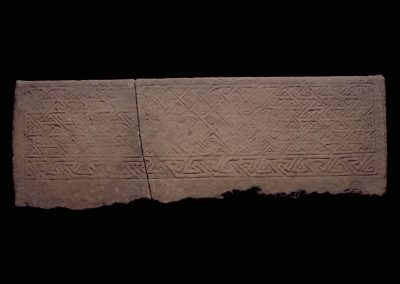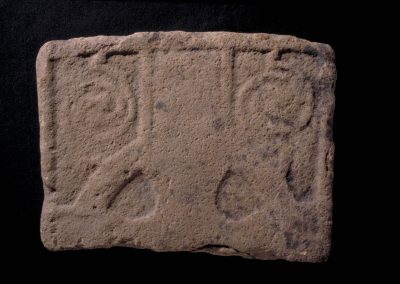Groam House Museum
Location
Black Isle, IV10 8UF
Accessibility and amenities
Easy access ground floor
See full details below
Entry: free
Groam House Museum
Location
High Street, Rosemarkie,
Black Isle, IV10 8UF
Accessibility and amenities
Easy Access, Ground Floor
See full details below
Groam House Museum
Taigh-Tasgaidh Taigh a’ Ghròim
Pictish stone collection
Cruinneachadh de chlachan Cruithneach
One of the most spectacular collections of Pictish sculpture in the Highlands. Visitors can get close to wonderfully carved stones, including the magnificent and unusual Rosemarkie Stone. The stones illuminate the history and stories of saints and an important early Christian monastery hidden under the village of Rosemarkie.
Groam House also cares for the George Bain Collection, a Recognised Collection of National Significance. A teacher of Celtic art, George Bain was inspired by the art and design of the Picts and his unique work continues to inspire modern artists and craftspeople.
In addition to its Pictish sculpture and the George Bain Collection, the Museum has a small local history collection reflecting life in this area of the Black Isle, with photographs, objects, documents and memorabilia.
If you are travelling between the Black Isle and Easter Ross, why not use the Cromarty Ferry (seasonal service)? https://www.highland.gov.uk/info/1526/public_and_community_transport/777/cromarty_ferry
Further information
A monastery flourished in Pictish times at Rosemarkie, which became the organisational centre of religion in the area. Traditionally three saints are linked to Rosemarkie – St Curetan, St Boniface and St Moluag. Their complex histories and the carved stones clearly speak of centuries of activity here.
The focus of the museum’s collection is the Rosemarkie cross slab whose remarkable and unusual designs make it one of the wonders of Pictish sculpture and art. The top of the slab has broken but the stone stills stands at over two and a half metres high. Its incredibly slim proportions are covered on all sides with detailed designs of fine key-pattern and interlacing as well as two small Christian crosses. The slab originally displayed three crescent symbols with V-shaped rods. Only the tips of the top crescent and angle of its V-rod survive. The Rosemarkie slab is the only Pictish monument that displays three versions of the same symbol. The other symbols are the double disc with reversed Z-rod and mirror with comb. The sculptor was clearly a master of his art, using contrasting textures and patterns to create beautiful and intricate designs.
The Rosemarkie Stone is highly unusual in that it has no figurative carvings – most cross slabs have carvings on at least one face that depict people, either highlighting Pictish nobility or stories from the bible. In their place on the Rosemarkie Stone is a small, refined cross set within a sunken square area. Four circular ‘bosses’ and finely meshed interlacing surround the arms and shaft of the cross. The design of this cross compares to those found in the illuminated Gospel books of period and is considered one of the wonders of Pictish art. There is nothing else like this in Highland Pictish sculpture. The cross slab may have stood at one of the entrances to the monastic site in Rosemarkie, which would have contained a church, monk’s cells and burial ground. It is possible that the stone might have been coloured for Christian festivals.
Most of the other pieces of sculpted stone on display at the museum would have been set inside the church. A few fragments show fantastical beasts or men, while others are covered in interlace and key pattern. There’s an amazingly sculptured ringed cross and even a tree vine representing the ‘tree of life’. Most of these finely sculpted stones formed parts of the church: an altar, what could be the tomb of a bishop, and a shrine for relics of a saint.
Explore more about the incredibly special Rosemarkie Stone and its importance in the story of Pictish art here.
Accessibility and amenities
Tel: 01381 620961
Shop selling local arts and crafts
Public toilets - close by
Free parking - close by
Less than 500m from parking
Accessible by public transport (bus)
Accessibility details
Downstairs accessible, while there is usually a virtual option for seeing the exhibition upstairs if the stairs are too difficult. Large print version of display information available.
Find more like this

